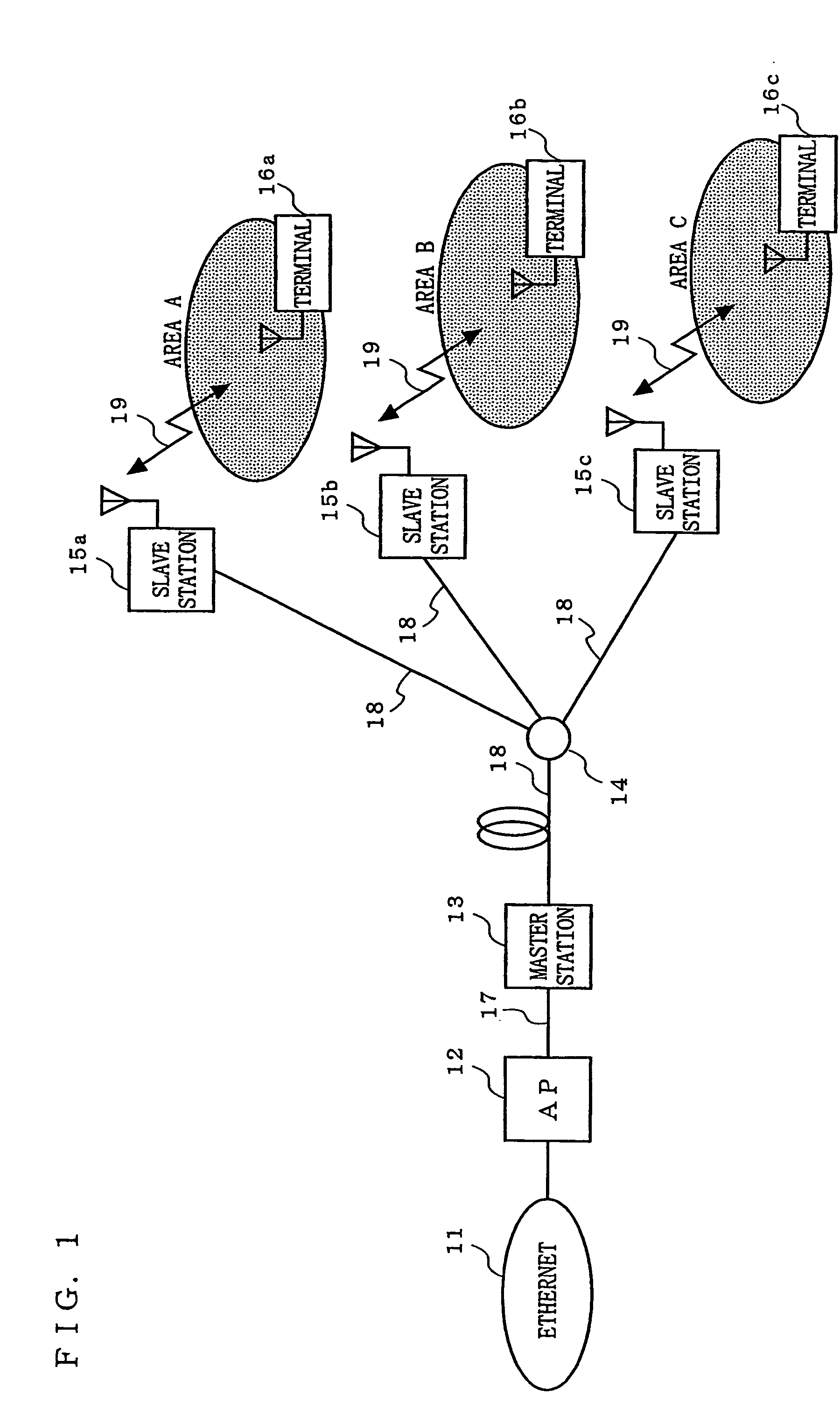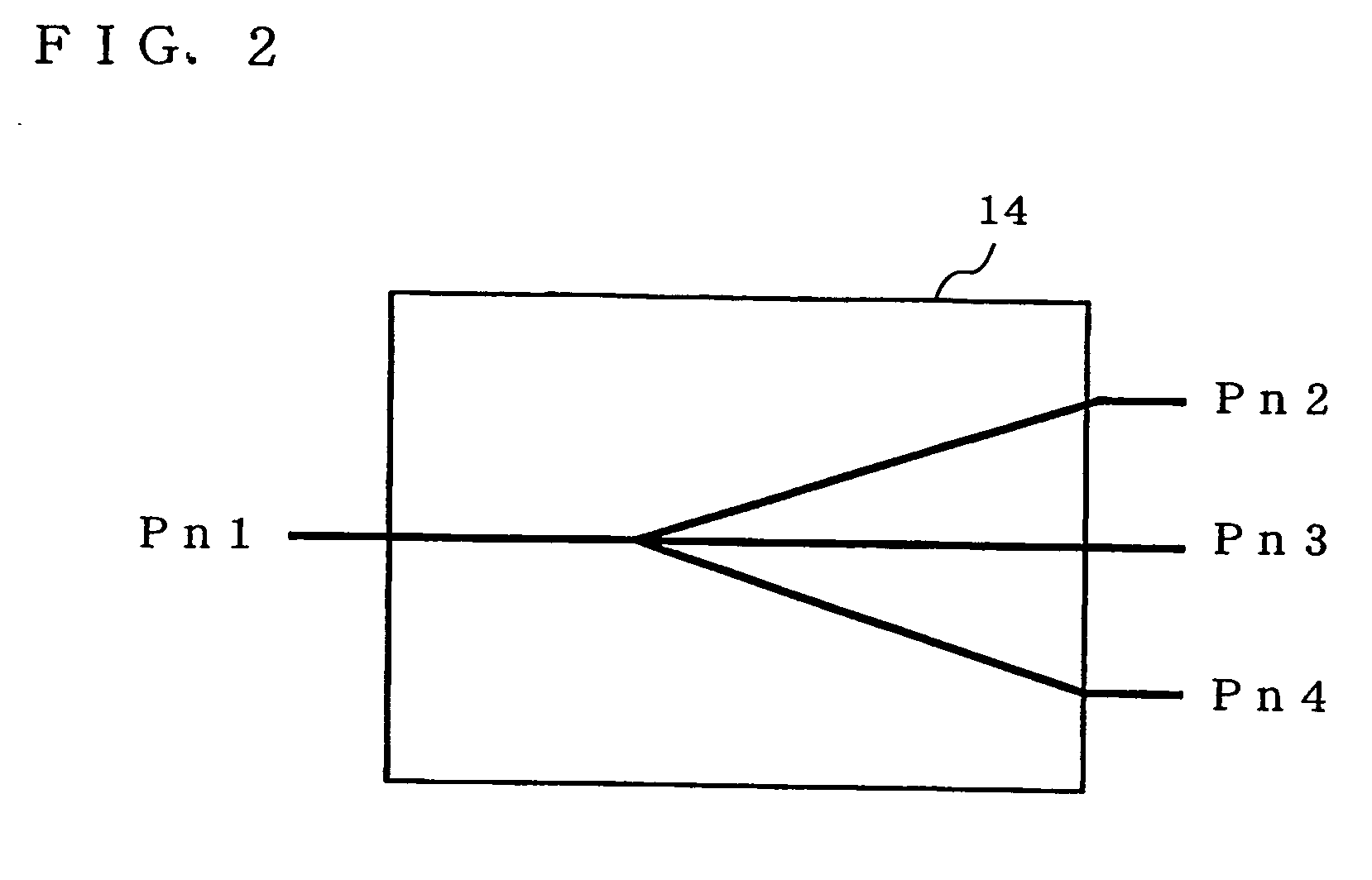Wireless access system and method
- Summary
- Abstract
- Description
- Claims
- Application Information
AI Technical Summary
Benefits of technology
Problems solved by technology
Method used
Image
Examples
first embodiment
[0035]FIG. 1 is a block diagram illustrating a configuration of a wireless access system according to a first embodiment of the present invention. The wireless access system according to the first embodiment includes: an access point (AP) 12 connected to Ethernet network 11; a master station 13; an optical multiplexing / demultiplexing section 14 which serves as an access control section; slave stations 15a to 15c; and terminals 16a to 16c. The access point 12 and the master station 13 are connected to each other by an electrical cable transmission line 17. The master station 13 and the optical multiplexing / demultiplexing section 14, and the optical multiplexing / demultiplexing section 14 and the slave stations 15a to 15c are connected by optical fiber transmission lines 18. The slave stations 15a to 15c and the terminals 16a to 16c are connected by wireless transmission lines 19, respectively.
[0036] First, each component of the wireless access system according to the first embodiment...
second embodiment
[0049] The foregoing first embodiment describes a wireless access system with which the hidden terminal problem is solved by transmitting and receiving RTS and CTS packets before the actual data transmission takes place. On the other hand, a second embodiment will describe a wireless access system with which the hidden terminal problem is solved while performing the actual data transmission, without the need to perform transmission and reception of the packets.
[0050] The configuration of the wireless access system according to the second embodiment of the present invention is the same as that shown in the block diagram of FIG. 1, except that the transmission and reception of RTS and CTS packets are not performed between the master station 13 and the slave stations 15a to 15c, and that a special optical multiplexing / demultiplexing section 24 is used in place of the optical multiplexing / demultiplexing section 14. The wireless access system according to the second embodiment will be d...
third embodiment
[0057] The foregoing second embodiment describes a wireless access system that uses a special optical multiplexing / demultiplexing section 24 to solve the hidden terminal problem while performing the actual data transmission, without the need to perform transmission and reception of RTS and CTS packets. On the other hand, a third embodiment describes a wireless access system which, although using a typical optical multiplexing / demultiplexing section 14, does not need to perform transmission and reception of the packets.
[0058] The configuration of the wireless access system according to the third embodiment of the present invention is the same as that shown in the block diagram of FIG. 1, except that a master station 33 is used in place of the master station 13 and slave stations 35a to 35c are used in place of the slave stations 15a to 15c. The wireless access system according to the third embodiment will be described below with particular emphasis on the master station 33 and the s...
PUM
 Login to View More
Login to View More Abstract
Description
Claims
Application Information
 Login to View More
Login to View More - R&D
- Intellectual Property
- Life Sciences
- Materials
- Tech Scout
- Unparalleled Data Quality
- Higher Quality Content
- 60% Fewer Hallucinations
Browse by: Latest US Patents, China's latest patents, Technical Efficacy Thesaurus, Application Domain, Technology Topic, Popular Technical Reports.
© 2025 PatSnap. All rights reserved.Legal|Privacy policy|Modern Slavery Act Transparency Statement|Sitemap|About US| Contact US: help@patsnap.com



